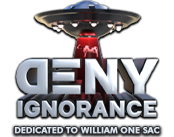06-08-2024, 03:59 PM
I am sure this has been brought up here on this forum in the past, but I am new to this site having left ATS a while ago due to the three letter agencies getting their hands on it.
This post is regarding the mysterious lines found at the bottom of the Earth's oceans. I have always wondered what these are ever since Google Earth showed us the mapping of the oceans.
It could be a simple explanation (underwater cables, underwater currents etc.) but I found their routes to not be random at all and in actuality look very planned out with sharp turns and many of them crossing over/through underwater land masses that could have been above sea level in previous civilizations. They appear to be huge as well so whatever was using them must have been massive!
Any thoughts?
![[Image: data=CigiJgokCZtIQE6WMzRAEZ1IQE6WMzTAGQI...PSE-qphEzA]](https://earth.google.com/web/search/CUBA/@-7.45166232,-96.95167483,-6167.49748868a,8017442.03965545d,35y,8.96127074h,0t,0r/data=CigiJgokCZtIQE6WMzRAEZ1IQE6WMzTAGQIhiagFVUZAIUPSE-qphEzA)
This post is regarding the mysterious lines found at the bottom of the Earth's oceans. I have always wondered what these are ever since Google Earth showed us the mapping of the oceans.
It could be a simple explanation (underwater cables, underwater currents etc.) but I found their routes to not be random at all and in actuality look very planned out with sharp turns and many of them crossing over/through underwater land masses that could have been above sea level in previous civilizations. They appear to be huge as well so whatever was using them must have been massive!
Any thoughts?
1990's work hard play hard
2000's work harder play less
2010's work hard no play
2020's work hard to pay tax
2000's work harder play less
2010's work hard no play
2020's work hard to pay tax











